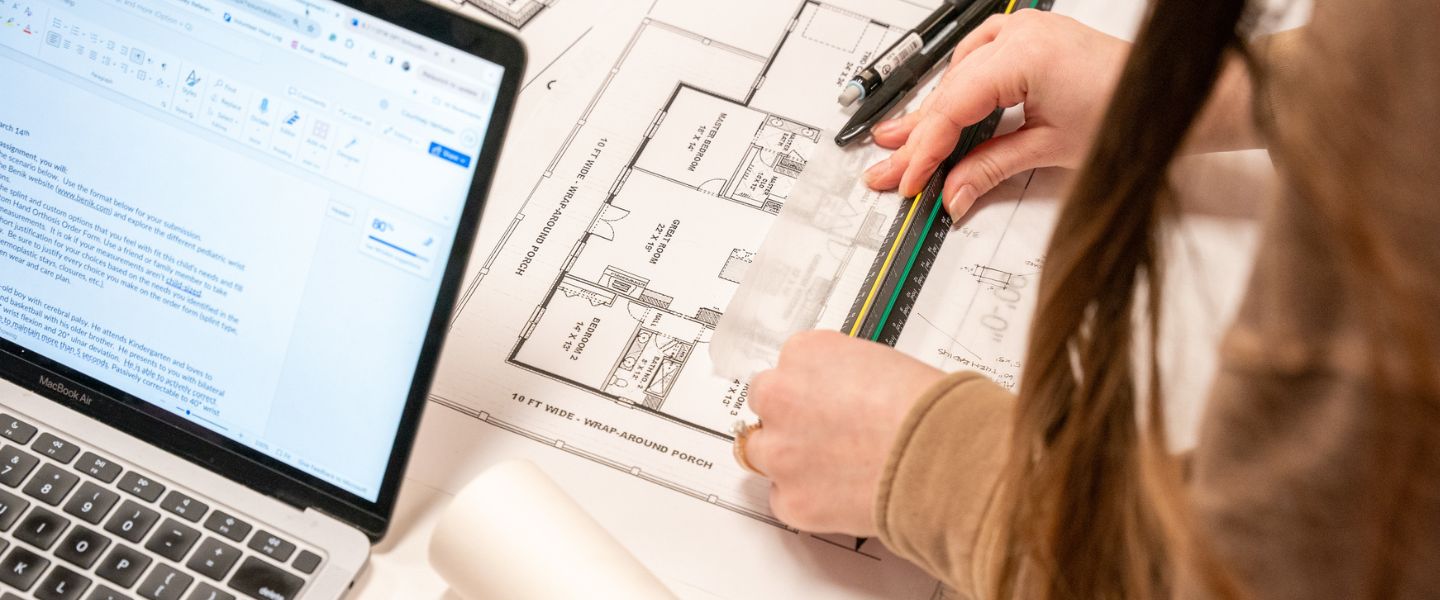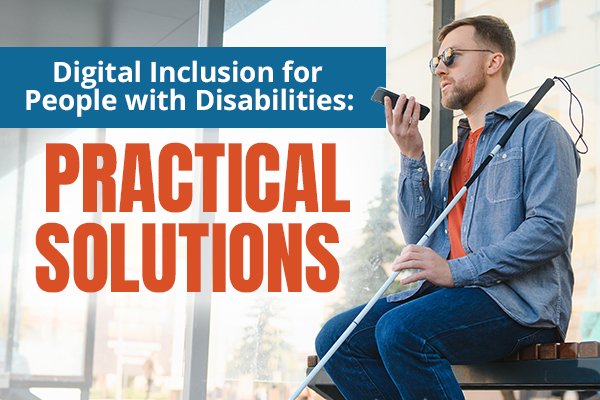Ensuring events are accessible for everyone is crucial. Event accessibility solutions help achieve this goal.
Creating inclusive events means considering all attendees’ needs. Whether it’s a conference, concert, or festival, accessibility solutions ensure participation for all. From wheelchair ramps to sign language interpreters, these solutions address various disabilities. They also improve the overall experience for everyone.
For event planners, understanding and implementing these solutions is key. It shows commitment to diversity and inclusion. In this blog post, we will explore the different accessibility solutions available. Learn how to make your event welcoming for everyone. Discover practical tips and ideas to enhance accessibility. Let’s dive into the world of event accessibility and make every event inclusive.
Table of Contents
Introduction To Event Accessibility
Ensuring accessibility at events is crucial. Accessibility means everyone can participate fully, regardless of their abilities. Creating inclusive events shows respect and consideration for all attendees. It also promotes diversity and equality.
Importance Of Inclusive Events
Inclusive events benefit everyone. They foster a sense of belonging and community. Accessible events also attract a larger audience. This leads to higher engagement and better participation. Businesses and organizations gain positive reputations. They are seen as caring and responsible.
Current Challenges
Many events still face accessibility issues. Venues may lack ramps or elevators. Signage might be inadequate for visually impaired attendees. Events often fail to provide sign language interpreters. Another challenge is the lack of accessible digital content. Websites and apps may not be usable for all.
Legal Requirements
Ensuring event accessibility is not just a good practice, it’s a legal requirement. Understanding these requirements can help you avoid legal issues and create inclusive events. Below we explore the legal landscape, including ADA compliance and global accessibility standards.
Understanding Ada Compliance
The Americans with Disabilities Act (ADA) sets the standard for event accessibility in the United States. Any public event must comply with the ADA to ensure accessibility for all attendees.
Key ADA requirements include:
- Accessible parking spaces
- Ramps and elevators for wheelchair access
- Accessible seating arrangements
- Assistive listening devices
Non-compliance with ADA can lead to legal repercussions and fines. It also affects your event’s reputation. Therefore, understanding and implementing ADA standards is crucial.
Global Accessibility Standards
Beyond the United States, many countries have their own accessibility standards. These standards ensure events are accessible to all individuals, including those with disabilities.
Here are some global standards:
| Country | Standard |
|---|---|
| United Kingdom | Equality Act 2010 |
| Australia | Disability Discrimination Act 1992 |
| Canada | Accessible Canada Act |
These laws are in place to ensure that events are inclusive. They cover various aspects of accessibility, such as venue design, communication aids, and transportation.
Adhering to global accessibility standards can help you reach a wider audience and enhance the overall experience of your event attendees.
Venue Selection
Choosing the right venue is crucial for event accessibility. The right location ensures everyone can attend and enjoy the event. This section will cover key aspects of venue selection to ensure accessibility.
Accessible Locations
Look for venues with ramp access and automatic doors. These features help attendees with mobility issues. Ensure the venue has elevators if it has multiple floors. Check if there are accessible restrooms on each floor. Verify that these restrooms are spacious and have necessary grab bars.
Transportation Considerations
Think about how attendees will get to the venue. Choose a location near public transportation. Ensure there are bus stops and train stations nearby. Verify that these transportation options are wheelchair accessible. Provide clear information about parking options. Ensure there are plenty of accessible parking spots close to the entrance.
Check if the venue offers shuttle services. These services can be a great help for attendees with mobility issues. Make sure the shuttles are equipped with lifts or ramps. This ensures everyone can use the service comfortably.
| Feature | Details |
|---|---|
| Ramps | Ensure ramps are available and easily accessible |
| Elevators | Check for elevators if the venue has multiple floors |
| Accessible Restrooms | Must have grab bars and enough space |
| Public Transport | Venue should be near bus stops and train stations |
| Accessible Parking | Ensure ample accessible parking spots near the entrance |

Credit: www.belmont.edu
Technology And Tools
Event accessibility solutions have transformed with the help of advanced technology and tools. These innovations ensure everyone can enjoy and participate in events. This post explores some of the key technologies and tools that enhance event accessibility.
Assistive Devices
Assistive devices play a crucial role in improving event accessibility. They help individuals with disabilities navigate and participate in events. Common assistive devices include hearing aids, mobility scooters, and screen readers. These tools provide necessary support and enhance the overall experience.
Mobile Apps For Accessibility
Mobile apps designed for accessibility are essential tools for event-goers. They offer features like real-time text-to-speech, navigation assistance, and event information. These apps make it easier for individuals with disabilities to access event details and navigate the venue. Examples include Seeing AI and Be My Eyes, which provide visual assistance through a smartphone.
Communication Strategies
Effective communication is vital for successful events. Ensuring accessibility means everyone can engage. Here are some top communication strategies to achieve this.
Sign Language Interpreters
Using sign language interpreters is essential for deaf attendees. They translate spoken words into sign language, making events inclusive. Here’s how to use them effectively:
- Hire certified interpreters for accuracy.
- Place interpreters in visible spots.
- Ensure good lighting for clear visibility.
Captioning Services
Captioning services benefit those who are hard of hearing. They provide real-time text of spoken words. Here are the types of captioning services:
| Type | Description |
|---|---|
| Real-time Captioning | Live transcription during the event. |
| Closed Captioning | Available on recorded videos. |
Offering both types ensures full accessibility. Choose the right service for your event’s needs.

Credit: www.magicedtech.com
Inclusive Event Design
Creating an inclusive event means considering the needs of all attendees. This includes those with disabilities. An inclusive design ensures everyone can participate fully. Let’s explore key aspects of inclusive event design.
Layout And Navigation
The layout and navigation of your event space are crucial. Clear paths should be provided for wheelchair users. Ensure aisles are wide enough. Remove any obstacles that could trip someone.
Use large, readable signs. These should direct people to key areas. Signs should be at eye level and well-lit. Braille signs and audio announcements are also helpful.
Provide rest areas. These should have seating for those who need breaks. Ensure these areas are easy to find.
Sensory-friendly Spaces
Many people benefit from sensory-friendly spaces. These are quiet areas with soft lighting. They help people who feel overwhelmed by noise and crowds.
Offer noise-canceling headphones. These can help those sensitive to loud sounds. Provide fidget tools and weighted blankets. These can help people feel calm and focused.
Create a schedule with low-sensory times. These are periods with reduced noise and activity. Announce these times clearly. Ensure everyone knows when they can take a sensory break.
| Key Feature | Description |
|---|---|
| Wide Aisles | Accommodate wheelchairs and walkers. |
| Readable Signs | Help attendees navigate easily. |
| Sensory-Friendly Areas | Quiet spaces with soft lighting. |
| Assistive Tools | Noise-canceling headphones, fidget tools, and weighted blankets. |
Training And Awareness
Creating accessible events is crucial for inclusivity. Training and awareness play a vital role in ensuring that events cater to everyone. Proper training equips staff to handle diverse needs. Awareness among attendees fosters a supportive environment.
Staff Training Programs
Staff training programs are essential for event accessibility. These programs teach the staff how to assist attendees with disabilities. They learn to use assistive technology. They also understand the importance of clear communication. Training includes sensitivity to various needs. This ensures that all attendees feel welcomed and supported.
Staff should know the layout of accessible facilities. They should be familiar with accessible routes and seating. Training helps them respond to emergencies involving attendees with disabilities. Well-trained staff make a significant difference in the event experience.
Raising Attendee Awareness
Raising attendee awareness is equally important. Informing attendees about accessibility features helps them prepare. This includes accessible entrances, restrooms, and seating. Provide information on assistive services available at the event.
Use clear and simple language in all communications. This ensures everyone understands the accessibility options. Highlight the importance of respecting accessible spaces. Encourage attendees to support those with disabilities. Awareness creates an inclusive and respectful atmosphere.
Distribute information about accessibility on event websites and brochures. This makes it easy for everyone to access the needed details. Raising awareness among attendees ensures a smoother and more inclusive event experience.

Credit: talonaudiovisual.com
Feedback And Improvement
Ensuring accessibility at events is crucial. But to make continuous improvements, feedback from attendees is essential. Collecting and implementing this feedback can help create a better experience for everyone. Let’s explore how to gather and use feedback effectively.
Collecting Attendee Feedback
Start by asking attendees for their thoughts. Use simple surveys and feedback forms. Digital forms are quick and easy. Place a few questions about accessibility. Allow space for additional comments. This gives attendees a chance to share specific needs and suggestions.
Use social media to gather feedback as well. Encourage attendees to share their experiences. Monitor comments and messages closely. This can provide real-time insights into accessibility issues. Offering incentives like discounts for future events can boost response rates.
Implementing Changes
Once feedback is collected, analyze it carefully. Look for common themes and recurring issues. Prioritize changes based on impact and feasibility. Start with the most critical areas first.
Communicate the changes to your team. Ensure everyone understands their role in implementing improvements. Regular training sessions can help staff stay updated on new accessibility measures.
Lastly, inform attendees about the changes. Use newsletters, social media, and your event website. Showing that you value their feedback builds trust. It encourages more people to share their thoughts in the future.
Case Studies
Event accessibility solutions help create inclusive events for everyone. Understanding their effectiveness through real-life examples is crucial. Case studies offer insights into successful strategies and valuable lessons learned. Let’s explore some examples of inclusive events and the key takeaways from each.
Successful Inclusive Events
One notable example is the Annual Tech Conference. Organizers implemented sign language interpreters and live captioning. This enabled deaf and hard-of-hearing attendees to fully participate. The event also provided accessible seating and wheelchair ramps. Feedback from attendees highlighted the positive impact of these measures.
Another case is the Community Music Festival. Organizers ensured accessible paths and viewing areas for wheelchair users. They also offered sensory-friendly spaces for individuals with autism. These changes received praise for making the festival welcoming for all. The organizers saw a significant increase in attendance from diverse groups.
Lessons Learned
From these events, several lessons emerged. First, early planning is essential. Integrating accessibility from the start ensures smoother implementation. Second, involving people with disabilities in the planning process is crucial. Their insights lead to more effective solutions.
Training staff and volunteers also proves important. Educated personnel can better assist attendees with specific needs. Finally, clear communication about available accessibility features is key. Informing attendees beforehand helps them prepare and feel more included.
By examining these case studies, we gain valuable knowledge. Implementing inclusive practices can significantly enhance event experiences for all participants.
Future Trends
The future of event accessibility is promising. As technology advances, new trends are emerging. These trends aim to make events more inclusive. Let’s explore some key areas shaping the future of event accessibility.
Innovative Solutions
Event planners are adopting innovative solutions to enhance accessibility. Here are some examples:
- Virtual Reality (VR): VR allows people with disabilities to experience events.
- Augmented Reality (AR): AR helps users navigate venues with ease.
- Live Captioning: Real-time captions make events accessible to the hearing impaired.
- Voice Assistants: These tools assist attendees with finding information quickly.
These technologies are making events more accessible to everyone.
Evolving Standards
Accessibility standards are constantly evolving. Here are some key points:
| Standard | Description |
|---|---|
| WCAG 2.2 | New guidelines for web content accessibility. |
| ADA Compliance | Updated rules for physical and digital event spaces. |
| ISO 30071-1 | Global standards for digital accessibility. |
These evolving standards ensure that events are more inclusive. They provide clear guidelines for event planners to follow.
Frequently Asked Questions
What Is Event Accessibility?
Event accessibility ensures everyone can attend and participate, including those with disabilities.
Why Is Event Accessibility Important?
It promotes inclusivity, allowing all individuals to enjoy and engage in events equally.
How Can I Make My Event Accessible?
Consider ramps, sign language interpreters, and accessible seating. Make sure all materials are easy to read.
What Are Common Accessibility Features?
Ramps, elevators, accessible restrooms, braille signage, and hearing loop systems are common accessibility features.
How Do I Accommodate Visually Impaired Attendees?
Provide braille materials, guide dogs access, and clear, audible instructions to help visually impaired attendees.
What Is An Assistive Listening Device?
It amplifies sound for people with hearing loss. Helps them hear and engage in events better.
How Can I Ensure Digital Event Accessibility?
Use captioning, screen reader compatibility, and simple layouts for digital content to ensure accessibility.
What Are Ada Guidelines For Events?
The ADA guidelines require accessible venues, seating, and services for individuals with disabilities.
Conclusion
Making events accessible benefits everyone. It ensures no one feels left out. Simple changes can have a big impact. Think ramps, clear signs, and easy-to-read materials. Everyone deserves to enjoy events fully. Start with small steps. Create an inclusive environment today.
Your efforts will make a difference. Accessible events bring people together. They promote equality and enjoyment for all. Let’s make every event welcoming and inclusive.







